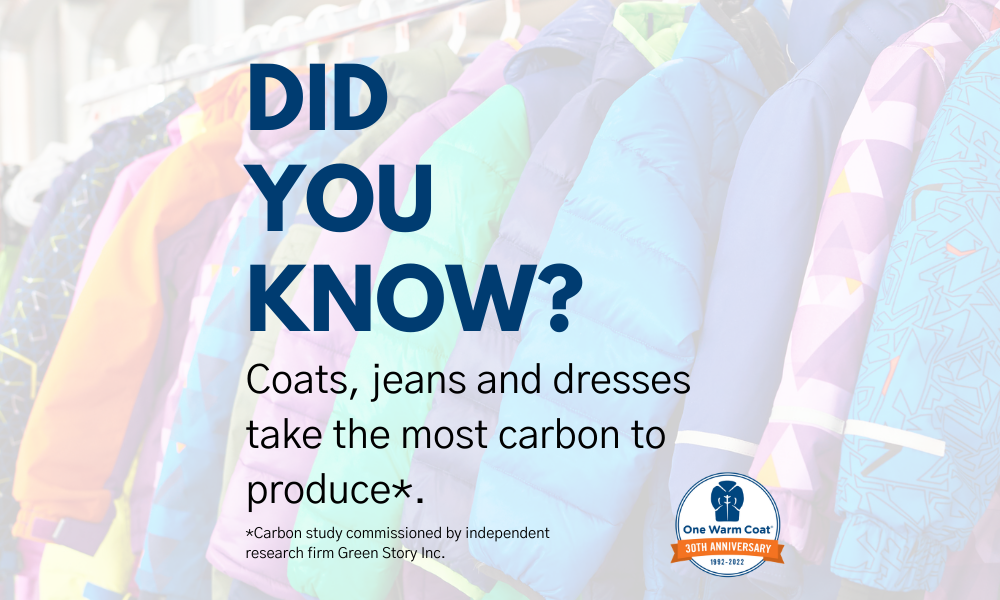As global concern about textile waste and sustainable practices continues to grow, One Warm Coat is proud to be part of the solution. For 30 years, One Warm Coat’s programs have provided warmth to people in need while promoting environmental sustainability and keeping more than 18 million pounds of clothing out of landfills.
Carbon Production
Did you know that coats, jeans, and dresses take the most carbon to produce?1 Additionally, nearly 60% of all clothing, or 3 in 5 garments, ends up in landfills or incinerated every year.2
One Warm Coat encourages everyone to recycle their wearable clothing and specifically to donate gently worn coats to children and adults in local communities across the country. Each year the Coat Drive Program keeps more than 1 million pounds of clothing out of landfills.
The Fashion Industry
The fashion industry is currently responsible for more annual carbon emissions than all international flights and maritime shipping combined.3 Because promoting sustainability through the reuse and repurposing of outerwear is one of One Warm Coat’s core values, we are honored to work with many compassionate companies that are actively addressing this issue.
Not only does the act of donating gently worn clothing benefit those in need, it also reduces the impact on the planet. If for instance, each item of clothing was worn twice as many times, greenhouse gas emissions would be 44 percent lower.4
How To Help
We can all do our part to cut these carbon emissions by looking for sustainable fabrics, wearing clothing garments longer, and donating wearable clothing when it is no longer needed or wanted.
How can you make a positive impact on the environment while helping people in need?
- You can donate gently worn coats to a coat drive near you.
- Register to hold a coat drive.
- Make a financial contribution. Every $1 donated provides warmth for 1 person.
- Retailers, wholesalers, and manufacturers can make a difference through the Zero Waste Initiative.
Sources:
- Carbon study commissioned by independent research firm Green Story Inc. ThredUp. 2020.
- Refashioning clothing’s environmental impact. Magnin & Hedrich. 2019.
- The Impact Of Fast Fashion On The Environment. Le. 2020.
- Refashioning clothing’s environmental impact. Magnin & Hedrich. 2019.

